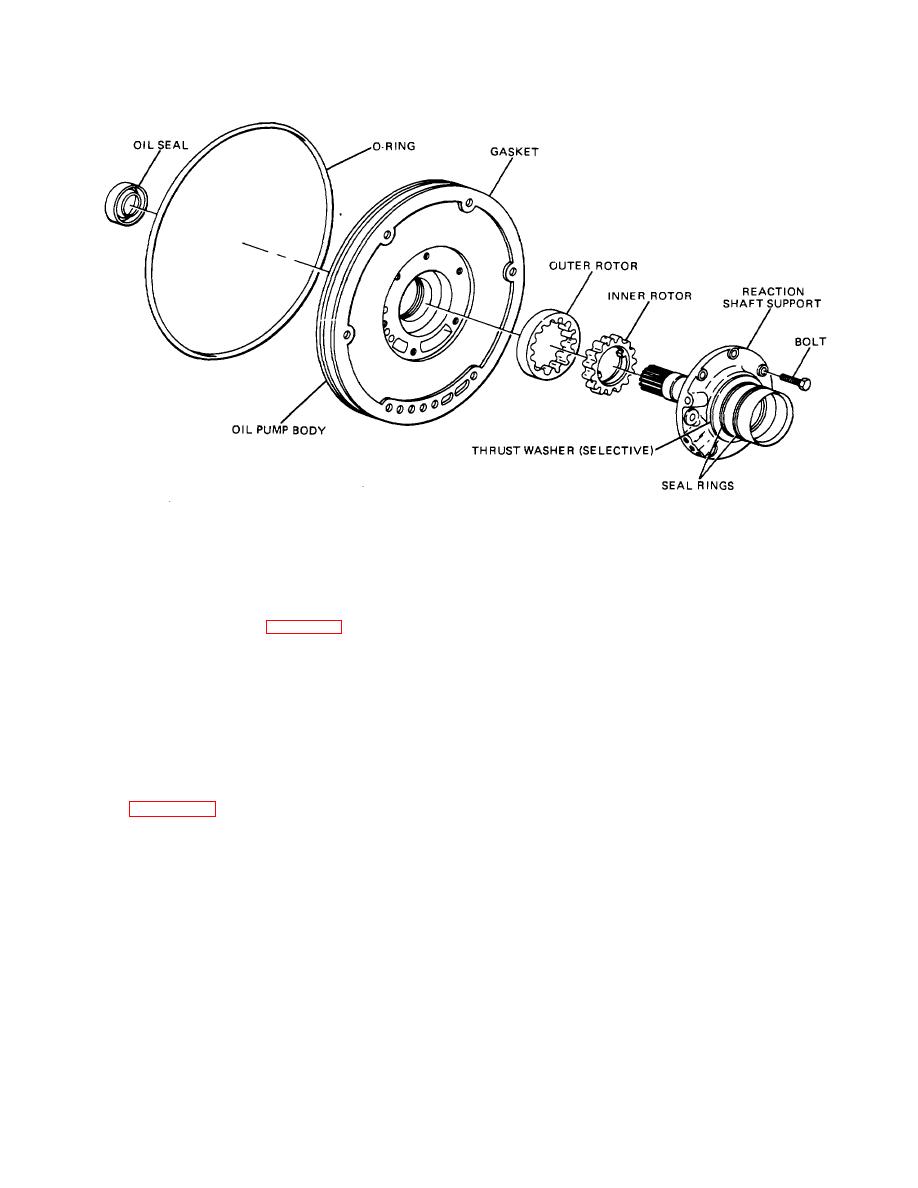
| Tweet |

Custom Search
|
|

|
||
 TM 9-8000
Figure 23-11. Typical Transmission Hydraulic Pump.
pressure signal attempts to move the spool against
20-5) or an internal-external gear-type pump (para 20-7).
spring pressure.
It usually is located in the front of the transmission case
and is keyed to the torque converter hub so that it is
(3) As pump pressure overcomes the
driven by the engine.
b. Oil Sump and Filter (Fig. 23-10). The oil
spring pressure, the spool is pushed to the left,
uncovering the pump suction feedback port. Pump
sump usually is in the form of a sheet metal pan that
pressure then is bled off through this port, causing a line
attaches to the bottom of the transmission case. The
pressure drop.
pump draws oil from the sump through a strainer. The
strainer usually is made of paper or metal.
(4) The line pressure drop allows the
c. Regulator Valve. The regulator valve controls
spring to close the bleed port, which, in turn, allows
pump pressure to build again. From then on the
the pressure of the hydraulic pump so that the hydraulic
regulation of line pressure is a constant cycle between
system of the transmission receives a constant working
pump and spring pressure operating the spool valve.
pressure. The pressure supply received by the hydraulic
system is called line pressure. The basic regulator valve
The valve described above is a balance-type spool valve.
is shown in figure 23-10.
Balance-type spool valves are very common in the
transmission's hydraulic system.
(1) Pump pressure is fed to the hydraulic
system through the spool valve. The spool is held to the
d. Modulation of the Regulator Valve (Fig.
right by a calibrated spring. In this position, the spool
23,10). After the pump pressure passes through the
closes the port that allows pump pressure to be fed back
to the pump suction line.
regulator valve, it becomes regulated line pressure. In
(2) After the pump pressure leaves the
operation, however, automatic transmissions need
spool valve, a portion of it is fed back to the end of the
more than one set line pressure. To accomplish this,
spool valve, opposite to the spring. This pump
additional signals are fed to the regulator to modulate the
line pressure for specific purposes. The following
TA233708
23-13
|
||
 |
||